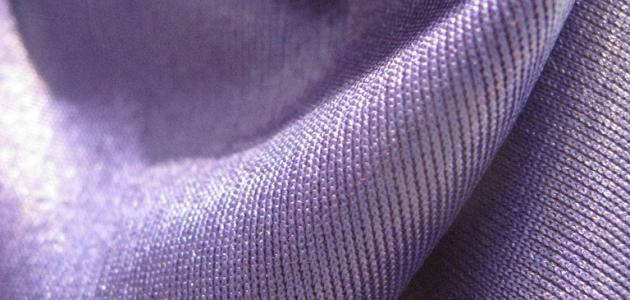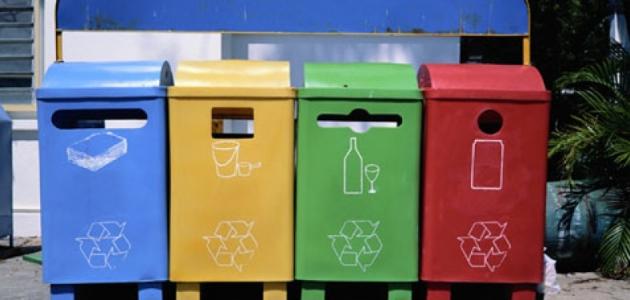Polyester fabric
Polyester fabric is one of the types of fabrics consisting of synthetic fibers that were developed in the twentieth century in scientific laboratories. The word polyester is derived from the words “poly,” which means many, and “ester,” which is a basic organic chemical compound. The main material used to make polyester is ethylene, which is derived from petroleum, along with air, coal, and water.
Polyester is made through a reaction between acid and alcohol. When this reaction occurs, two or more molecules combine to form a large molecule. Polyester fibers can form very long, stable and strong molecules. The process of forming polyester is called polymerization. At present, polyester is used in the manufacture of many Products, such as clothing, home furnishings, synthetic fabrics, and computers. Polyester has many advantages over traditional fabrics such as cotton.
Types of polyester fabric
Polyester is classified into two main types: saturated polyester and unsaturated polyester:
- Impregnated polyester: This type refers to the polyester family that consists mainly of saturated polyesters, which are non-reactive as is the case with unsaturated polyesters, and consist of low molecular weight liquids that are used as plasticizers and reactants in the formation of ethane polymers, and high-weight thermoplastic linear molecules such as polyethylene, usually The reactants of saturated polyesters are glycol, acid or non-aqueous acid.
- Unsaturated polyester: This type refers to the polyester family, which consists mainly of alkyl thermosetting resins that are characterized by not saturating vinyl. This type of polyester is used in reinforced plastics in particular, and is widely used because it is very economical.
Features of polyester fabric
Polyester fabric is characterized by many unique features and characteristics, the most prominent of which are the following:
Read also:bedroom arrangement- The polyester fabric and its fibers are very strong.
- It is considered to have a high endurance capacity, as it is resistant to most chemicals, and expands and contracts.
- Polyester is hydrophobic in nature, so it dries quickly and can be used for insulation by manufacturing hollow fibres.
- Polyester retains its shape and folds, and is therefore good for making clothing for harsh climates.
- It has high flexibility, whether wet or dry.
- It is one of the fabrics that is easy to wash and dry.
- It is resistant to wrinkles.
- It is resistant to mold.
- It is resistant to corrosion.
Disadvantages of polyester fabric
Polyester fabric is considered uncomfortable for many people, because it does not allow the body to be ventilated when wearing it, which leads to feeling hot and sweating a lot. Also, its moisture absorption property is low compared to natural fabrics such as cotton, so many fabric manufacturers have begun to make polyester fabric that absorbs moisture. To be suitable for work and sports, this fabric is considered flammable, so caution must be taken when wearing it or using it near fire.
Polyester fabric care
Polyester fabric requires special care that suits the characteristics that distinguish this fabric from other fabrics. The most prominent methods of caring for it are the following:
Read also:Gift ideas for children- Polyester can be washed and dried in washing machines. Fabric softener can be added during washing, and it must be dried at low temperatures to preserve the clothes.
- Polyester fabric does not need ironing, but when necessary, it must be ironed using an iron.
- Polyester fabric can be dry cleaned without any hassle.
How to make polyester fabric
Polyester fabric is manufactured in several ways, and the manufacturing method is chosen based on the final form that the polyester will take. There are four basic forms: thread, staple, lint, and filling. In the first form, each polyester fiber rope is uniform in length, and therefore produces a smooth fabric surface. In the second form, the threads are cut to specific lengths, and in this form the polyester is easier to combine with other fabrics. In the third form, the polyester threads are manufactured together. In a loose form, the last form is of huge size, and is used in the manufacture of quilts, pillows, and outer clothing. The most manufactured and used forms are the first and second forms, i.e. threads and staples.
History of polyester fabric
In 1926 AD, the American company Eleuthaire Irene du Pont began its research on very large molecules and synthetic fibers, led by chemist Wallace Hume Carruthers. This research focused on what later became known as nylon, which was the first synthetic fiber to be discovered. Between 1939 and 1941, British chemists showed interest in research. And the studies conducted by Du Pont, and they began their research on the same subject at the Calico Printers Association Limited, and from this research resulted the discovery of polyester, which is known in Britain as “Terylene.”
Read also:Useful household informationIn 1946 AD, DuPont purchased the right to manufacture polyester fibers in the United States of America, and the company began to develop the business further, and in 1951 AD it began marketing the fibers under the name “Dacron.” During the following years, several companies showed their interest in manufacturing polyester fibers, and manufactured their own fabrics. Its own for many uses.
Uses of polyester
Due to the many properties that polyester has, it is used in many fields and for different purposes. One of the most prominent uses of polyester is clothing, which was very popular in the 1970s, due to its strength and endurance. Polystyrene is also used in the manufacture of many materials that are used in many fields, The most prominent of these areas are the following:
- the cars: Polystyrene is used in the manufacture of automobile parts, door handles, car energy absorption panels, etc. Polyester is also used in the manufacture of child protection seats.
- Insulation Materials: Lightweight polystyrene foam provides excellent thermal insulation in many applications, such as building walls, roofs, refrigerators, and industrial cold storage facilities, and polystyrene insulation is resistant to water damage.
- electronics: Polystyrene is used in the manufacture of televisions, computers, and all information technology equipment.
- the food: Polystyrene is used in the manufacture of food packaging tools, which contribute to preserving food for a longer time and are considered better than other food preservation alternatives.
- Packaging: Polystyrene is widely used to protect consumer products such as CD cases, food packaging, meat and poultry trays, and egg boxes for damage protection purposes.
- Medical equipment: Polystyrene is used in the manufacture of tissue culture trays, test tubes, test kit boxes, and medical devices, due to its ease of sterilization.









